

ISSUE 161 | DR. PETER MICHAEL ADHD MYTHS: What Is Actually Going On Inside Your Brain VISION AND INNOVATION: An Interview with Dr. Peter Michael, MD-MBA PG 52 PG 32 5 PG 44 CHRISTMAS RECIPIES TO TRY THIS YEAR!

Everything is connected. I want all providers to know what the others are offering. I want the left hand to know what the right hand is doing. I want all the doctors to communicate and understand what that patient is getting and doing.
 - DR. PETER MICHAEL, MD-MBA
- DR. PETER MICHAEL, MD-MBA

Suffer from acute or chronic wounds? Healing shouldn’t be painful.
Experience pain-free treatment through a saline mist that reduces and removes bacteria while promoting healing. UltraMIST is a non-contact, lowfrequency ultrasound that painlessly promotes healing when administered by any trained health care professional.

Learn more
MICROVASCULAR TESTING SYSTEM


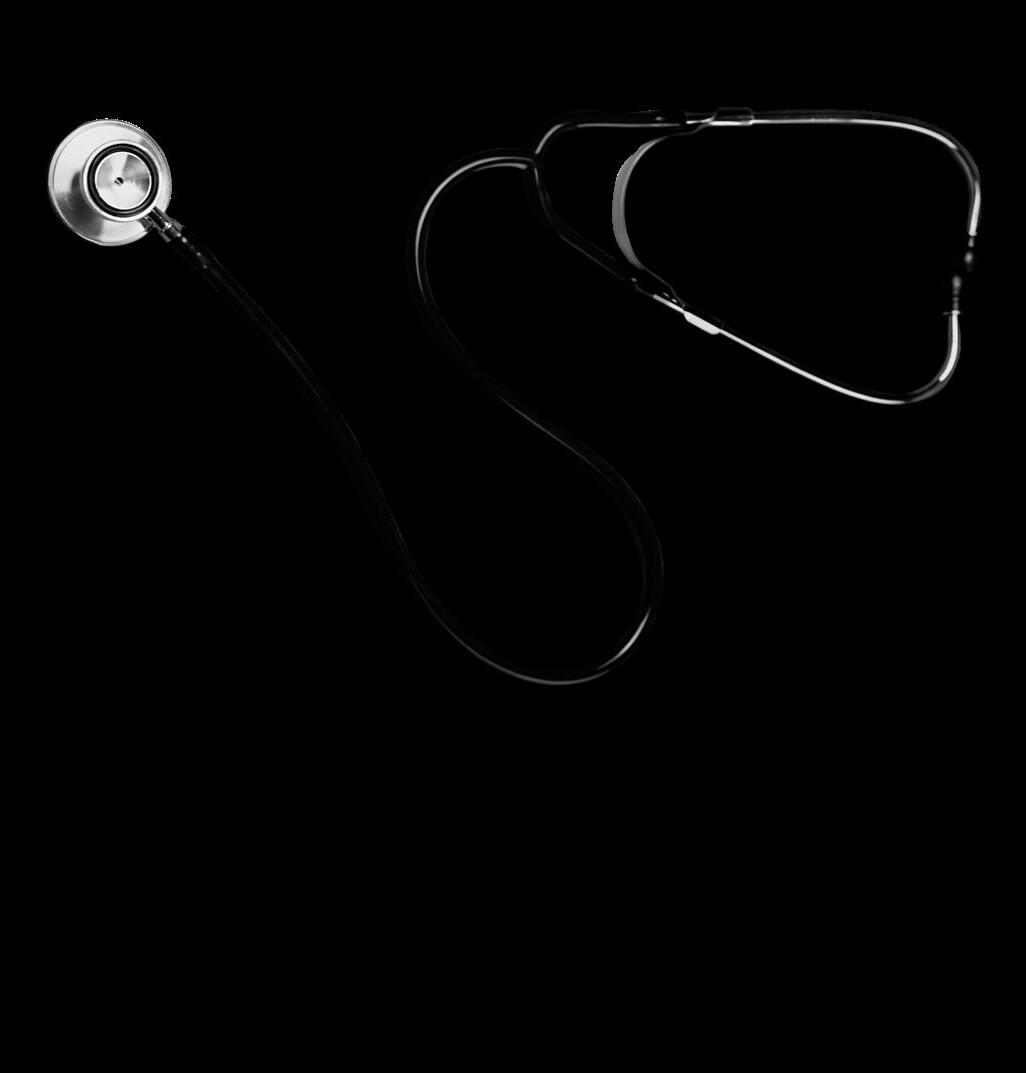

• Early Detection of Chronic Disease in Asymptomatic Patients
• Diagnose Complex Symptoms
• Increase Patient Compliance with Treatments



TopDocDX presents a real-life picture to the patient, with all its positive and negative influences. Therefore, physicians will have an enhanced understanding of the patient’s overall health. This clinically powerful and non-invasive testing system for hidden diseases in asymptomatic patients provides the patient with an inside-out look on their health.

15-MINUTE NONINVASIVE ON-SITE DIAGNOSTIC TESTS
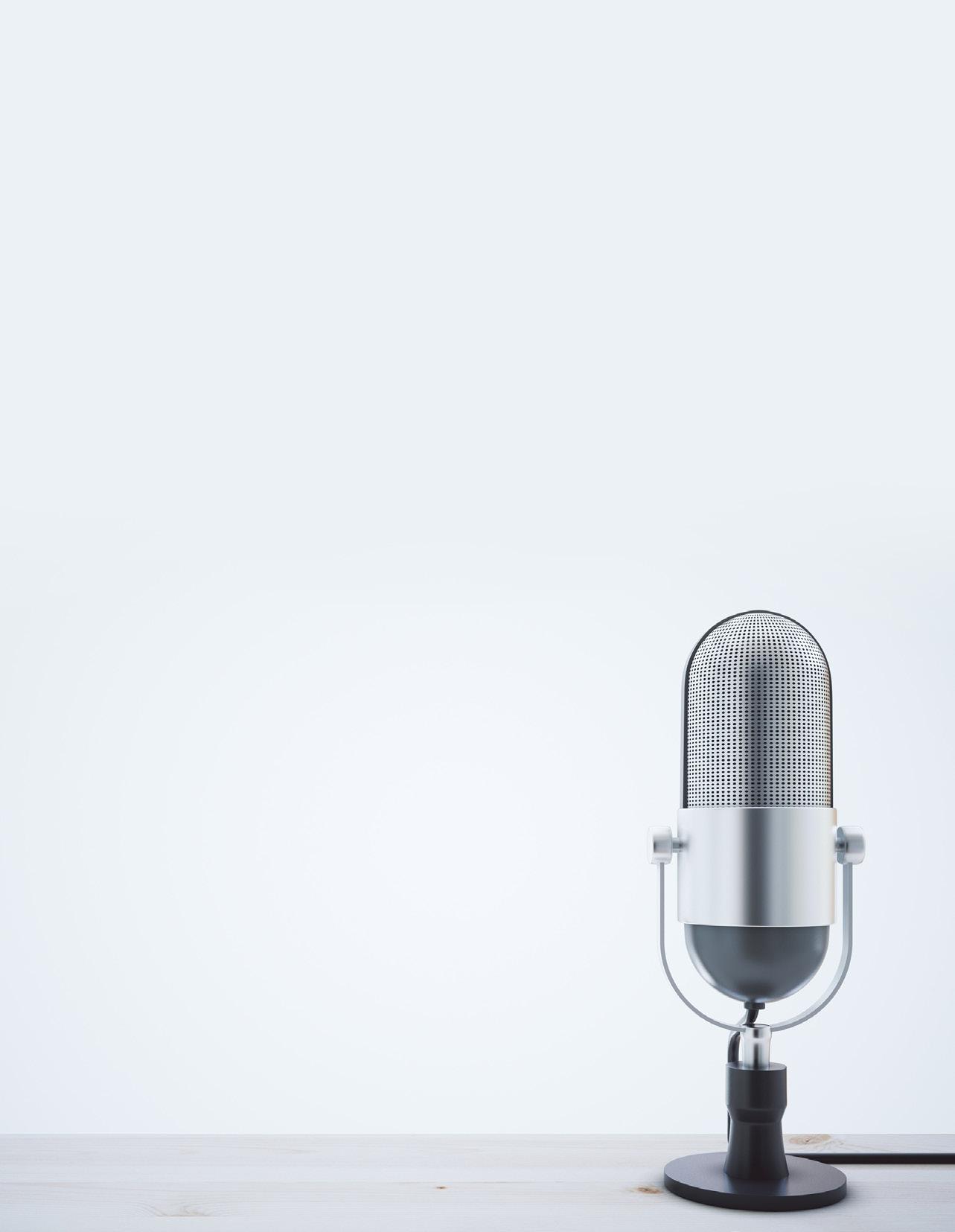
Listen

Learn more
to the latest in health and wellness on Spotify today!
CONTRIBUTORS
Adreana Mendez, Catherine Pannel, Drew B., Gaye Newton, Gentry Shannon, Luke Argue, Mălina O. R., Peter C., Zenith Lundell
TEAM
EDITOR IN CHIEF Brianna Connors JUNIOR EDITOR Riley George CHIEF MARKETING OFFICER Hannah Townes
MARKETING DIRECTOR Derek Archer SOCIAL MEDIA SPECIALIST Lauren Rider
GRAPHIC DESIGNER Sarah Cook
Leading a healthy, well-balanced life is a challenging undertaking for many of us. New advancements in lifestyle or nutrition come to life daily, and the busy rhythm of our lives often prevents us from keeping up with what’s fun and fresh.
Here at Top Doctor Magazine, we are on a mission to bring these advancements to your attention and become a source of inspiration for those who want to live their lives to the fullest. Our contributors will constantly keep you up to speed with fresh, entertaining, and reliable content, from nutrition and travel to lifestyle choices!

We hope that our handpicked ideas will guide you towards self-realization, selfimprovement, and willingness to help those around you better themselves.

A WORD



60 08 38 14 44 22 52 26 32 56 Taking Care Of Your Mental Health During the Holidays
How To Change Your Circadian Rhythm 5 Christmas Recipes To Try This Year! What Seasonal Affective Disorder (SAD) Is and How To Combat It ADHD Myths and What Is
Going On Inside Your Brain Are Menstrual Cramps Normal? How Pets Lower Chances of Allergies for Kids Is Drinking Bone Broth Good for You? LIFESTYLE MEDICAL NEWS NUTRITION SEXUAL WELLNESS Are Candles Bad for Your Lungs? CONTENTS 44 56 22
Vision and Innovation: An Interview With Dr. Peter Michael, MD-MBA
Actually
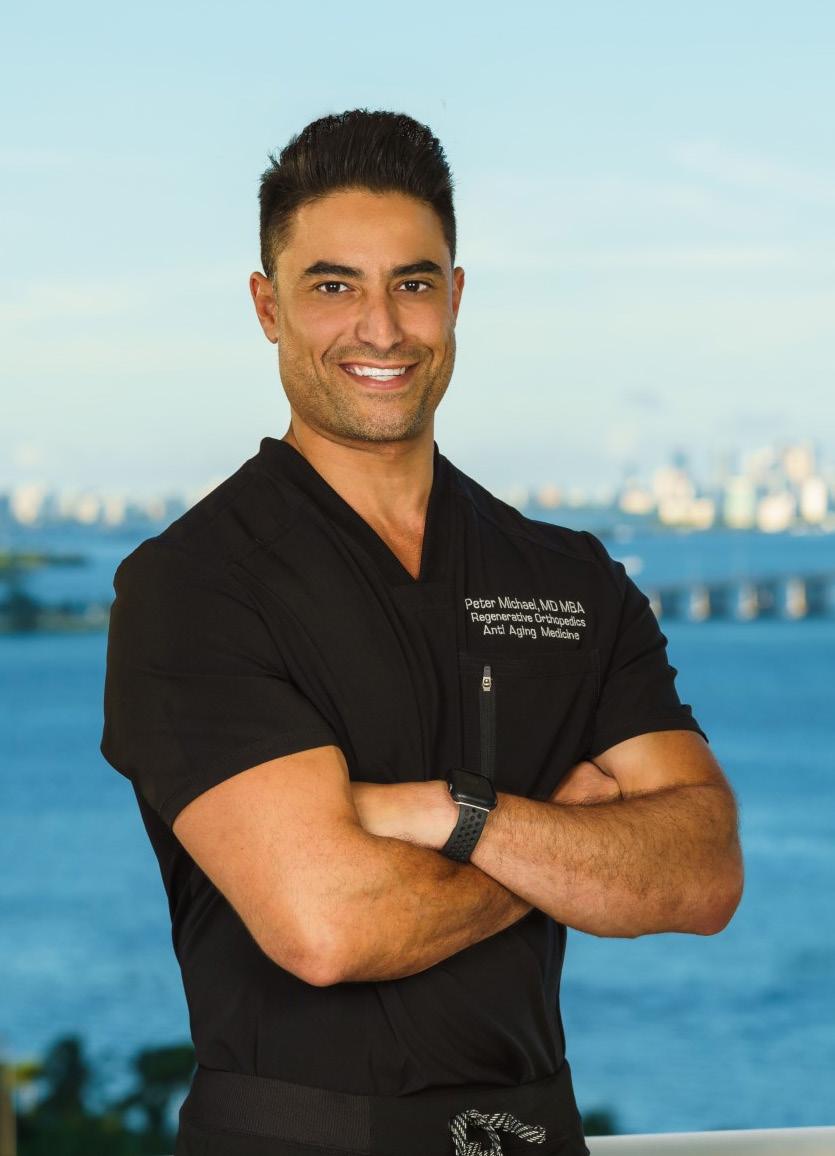
32

8
How Pets Lower Chances of Allergies for Kids
WRITTEN BY LUKE ARGUE

Allergies are one of the worst things about spring, especially for parents trying to help their kids stay sane amidst the constant sniffling, sneezing, itching and coughing. They have the potential to ruin the advent of spring and cause children to avoid furry friends for fear of getting a stuffy nose or itchy eyes.
However, as strange as it may sound, recent research indicates that pets could be an effective way to prevent children from developing allergies!
What Causes Allergies?
Children’s allergies
No, it’s not your imagination; allergies are becoming increasingly common and have been on the rise since the 20th century. In children, they are often caused by various forms of tree and grass pollen, molds, dust mites, animal dander, foods, medicines and bee stings.
Just as various as the allergy causes are the symptoms they produce, such as: SNEEZING; STUFFY NOSES; RED AND ITCHY SKIN AROUND THE EYES; ASTHMA SYMPTOMS LIKE COUGHS.
Most significantly, allergies can cause anaphylaxis when children are exposed to an allergen they are severely allergic to. The symptoms of anaphylaxis are: DIFFICULTY BREATHING; VOMITING; FAINTING.
Anaphylaxis is much more than a mere allergic reaction; it is a life-threatening condition that must be treated in kind. So, while most children’s allergies result in coughs, they can, in some instances, be life-threatening.
Top Doctor Magazine / Issue 161 / 9
For most, however, children’s allergies aren’t severe, and home remedies often are an easy, cost-efficient and effective way to provide relief. Regarding chronic or severe allergies, doctors will often prescribe medication and over-the-counter antihistamine creams and lotions as the first line of defense.
At home, you can apply cool, wet cloths or add oatmeal or baking soda to your child’s bath to treat skin conditions. For sinus irritation and congestion from pollen, breathing steam from a bowl of warm water can help relax and relieve the sinuses.
Lastly, for an upset stomach, the first step is adjusting the diet to give your stomach a break. When feeling sick, try a bland diet of foods like rice, bananas and applesauce. Then, ensure you’re drinking lots of water and minimizing strong scents contributing to a nauseous stomach.
However, these remedies are only so effective. Instead, the best home remedy is early prevention. That is where the power of pets to prevent allergies comes in.
How Do Pets Reduce Allergies in Kids?
Strangely enough, the fact that pets cause allergies in adults is why they can help prevent allergies in kids. Pets often carry things that can spark an allergic reaction,
like their dander. But in addition to their dander, pets also commonly carry microbes that stimulate our immune systems to learn how to better prepare for allergen exposure.

This is why having a friendly pet at home is about more than just having a playmate for your kid. Pets have been found to help prevent children from developing allergies, asthma or even eczema as they get older.
Several studies have backed this assertion. For example, a study of 1,029 children found that 49% of those without pets in the home during early childhood had allergies, while 43% of those with one pet had allergies and only 24% of those with three pets had allergies. This study indicates a positive relationship between having pets at home and reducing the chance of your child developing allergies.
Additionally, this study indicates what the researchers term a dose-dependent relationship, meaning that the more a child is exposed to pets, the more likely they are not to develop allergies. That’s why having more pets at home significantly reduces the likelihood of allergies.
One pet in a home has some effect, but depending on the pet’s personality, the child may or may not be exposed to them often. But with more than one pet, the chance of your child interacting with it significantly increases. This is why a child in a home with three pets is nearly 20% less likely to develop allergies than a child in a home with only one.
10

Top Doctor Magazine / Issue 161 / 11

12
How Can I Use a Pet to Keep My Kid from Having Allergies?

Now that you’ve seen the evidence for how pets can effectively prevent allergies, you might be wondering how you can use this information to help your kids or future kids. The answer is early exposure. The earlier your children are exposed to pets, the more effective those pets will be at preventing allergy development. For example, newborns exposed to a pet were only 12% likely to develop a form of eczema and 19% to develop wheezing by their third birthday.
Moreover, researchers are increasingly asserting that pet exposure is critical to your child’s development of a robust immune system. In particular, researchers are focusing on how dogs impact the early development of children’s immune systems shortly after birth. Their results could shed light on how important having a pet is for strengthening your child’s immune system.
A Parting Reminder
Dogs, cats and other pets might not be the allergy magnets some people think they are. In fact, our furry friends might be the key to developing healthy immune systems that minimize allergies as kids grow up! So, if you’re looking to keep your child strong, healthy and allergy-free as they grow up, consider adding an animal friend or two to your home. Not only will they keep your kid company and provide a great playmate, but they might also keep the sniffles, itches and sneezes at bay!
Top Doctor Magazine / Issue 161 / 13
iCircadiani Rhythm HOW TO CHANGE YOUR
 WRITTEN BY LUKE ARGUE
WRITTEN BY LUKE ARGUE
14

Top Doctor Magazine / Issue 161 / 15
Have you ever flown outside your time zone and felt groggy? Or maybe you've had a day where your body felt sluggish? That's not your imagination, but your body's clock, the circadian rhythm, out of sync with your schedule or surroundings.
What Is the Circadian Rhythm?
The circadian rhythm is your body's clock that controls various processes in the body, ranging from sleep to appetite and even hormone release. It is the result of a cluster of 20,000 nerves in the hypothalamus of your brain called the suprachiasmatic nucleus. These neurons trigger the release of various hormones, such as melatonin, to keep your body energized during the day and help it sleep at night.
This release and regulation of hormones creates your body's daily cycles, some of which you've probably noticed yourself. You might find that you have more energy during a particular time in the day or generally get hungry at the same time each day. The consistency of such feelings is thanks to your body's internal regulation of its circadian rhythm.
Why the Circadian Rhythm Is Important
Your circadian rhythm is important because it controls almost every part of your day regarding your body's energy and regulatory functions. When that rhythm gets disrupted, it affects your body's
delicate balance. For example, if you have a hard time sleeping regularly, then your hunger can be adversely affected, either through a disruption of your appetite or of the times when you are hungry. Besides your hunger, these disruptions can also increase the risk of severe conditions such as diabetes, obesity and depression.
Disruptions to your rhythm can also unbalance your energy cycles, making it harder to fall asleep and wake up. In addition, your energy levels will be disrupted during the day; therefore, focusing on tasks and maintaining energy in the middle of the day will become challenging. This lack of energy will only worsen as the day continues, and you can experience problems staying awake in the evening as your body tries to adjust its disrupted rhythm.
How Your Circadian Rhythm Can Be Disrupted
The circadian rhythm can be disrupted in various ways. One disruption you're likely familiar with is jet lag. The change in time zones can confuse your circadian rhythm by giving it light and schedule signals different from expectations. Likewise, daylight savings has a similar effect on your rhythm. Your rhythm is also easily affected by forcibly changing your sleep schedule. Whether changing from a day to a night shift, disrupting your sleep schedule through medications or alcohol or even just not having a consistent bedtime, keeping your body from sleeping and rising at consistent times can be very disruptive.
16

Top Doctor Magazine / Issue 161 / 17

18
Can You Reset Your Circadian Rhythm?
You can reset or alter your circadian rhythm by adjusting your habits. If you're not a morning person, but your job requires you to get up early, you can alter your circadian rhythm to help you become an early bird. But to achieve that, you first have to compare your natural rhythm with the desired patterns, like having more energy in the morning or being able to work at night.
How Do You Change Your Circadian Rhythm?
Supplements
You can use certain supplements to improve your body's melatonin production, the hormone responsible for regulating your sleep schedule. These melatonin supplements could help you fall asleep faster and facilitate your circadian rhythm transition. Speak to your doctor before taking such supplements.
Caffeine
Caffeine is another method you can use to alter your circadian rhythms. It can effectively give your body an extra push when it feels low on energy, causing an influx of energy that ignores your body's natural circadian energy rhythm. Caffeine can be very effective in the short term, but it often takes a long time for your body to fully remove it from the system.
How To Naturally Reset Your Circadian Rhythm
Light Exposure
Light exposure is the most effective way to modify your circadian rhythm. You can utilize this fact in two ways. First, spend time outside when you want to be awake. Exposing yourself to natural light can kick your circadian rhythm into its alert setting. Second, create a very dark environment when you want to sleep.
Exercise
Exercise is another excellent way to reset your circadian rhythm by improving your sleep schedule and making it easier to fall asleep. However, it is worth noting that exercising within two hours of going to bed could harm your sleep, so make sure to exercise an adequate number of hours before your usual sleep time.
Meal Times
Moving around your meal times will adjust the periods in the day when you feel the most or least energized. Try altering your meal times and see if you can find an energy schedule that works best for you.
How Long Does It Take To Fix Your Circadian Rhythm?
How long these methods will take to change your circadian rhythm depends mainly on how dedicated you are to pursuing them. Much like any new habit, it can take time for your body to adjust to its new schedule. Depending on how significant a schedule change you are making, you can anticipate it to take somewhere between a few days to a few weeks to fully change your rhythm.
Top Doctor Magazine / Issue 161 / 19
Closing Remarks On Altering Circadian Rhythms
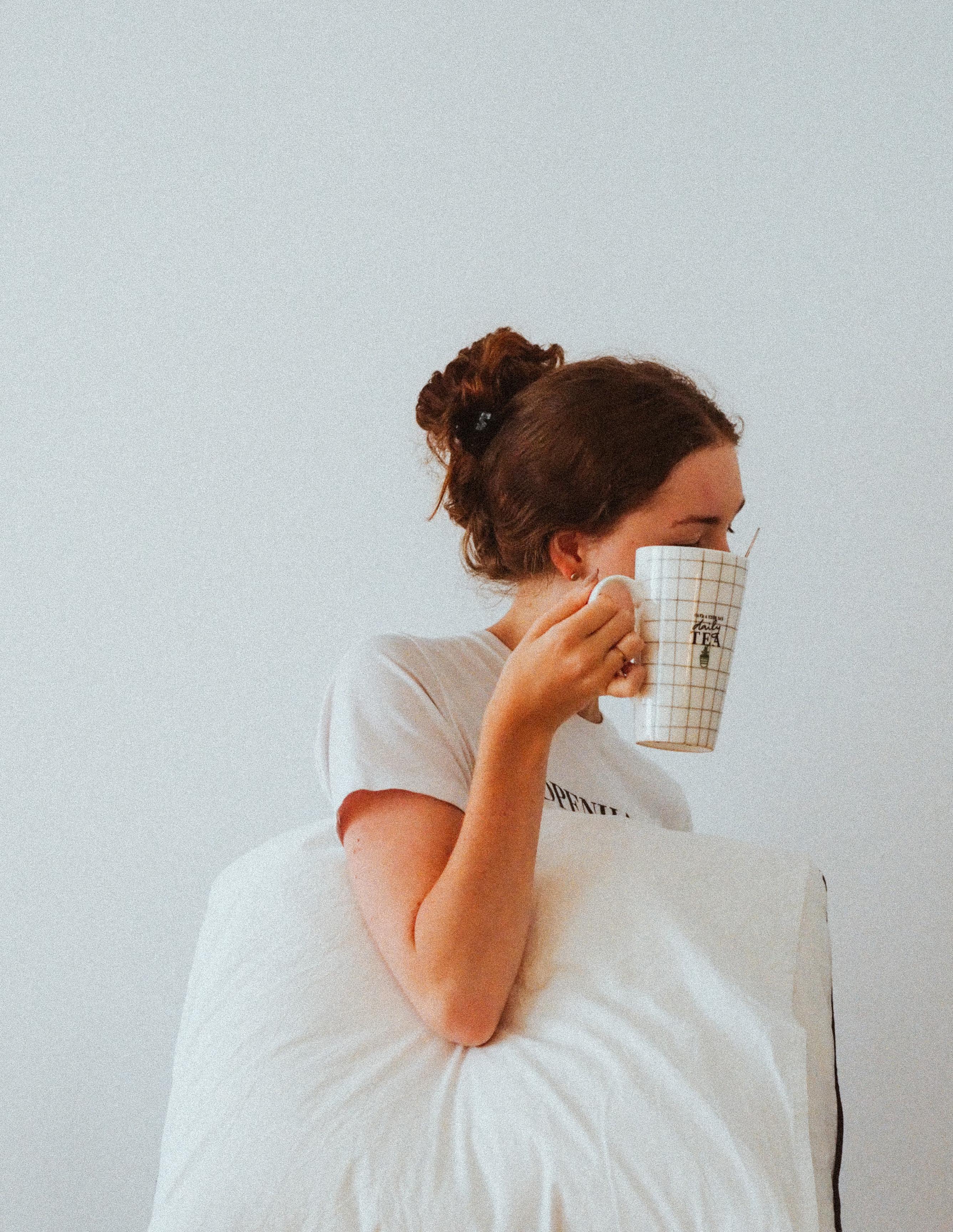
Your body likes patterns and routines that it can anticipate. To feel the healthiest and most energized you can, you either have to support that rhythm with a regular sleep schedule and patterns or adjust it to fit your lifestyle. What you cannot do is ignore your natural rhythms. Doing so risks several serious health effects and will leave you feeling sluggish and exhausted. So the next time you feel groggy, maybe check to see how well your internal clock is ticking and think about giving it a tune-up!

20
MUCH
DEDICATED FAMILY MEDICINE IN LOS ANGELES, CA




TREATMENT
MORE THAN SIMPLY
With every patient that walks into the Beverly
Medical
primary goal is to build a relationship that will last
lifetime. Her services are strategically centered
comprehensively treating the individual, not
the symptoms. Learn more • PATIENTS LOVE THE GENTLE APPROACH AND ATTENTION TO DETAIL • CONVENIENTLY LOCATED NEAR THE CEDARS-SINAI MEDICAL CENTER • CURATED INDIVIDUAL TREATMENT PLANS JUST FOR YOU! (310) 688-8080
Hills
Institute, Dr. Shaghayegh Tavassoli’s
a
around
just

22
Are Candles Bad for Your Lungs?
WRITTEN BY LUKE ARGUE
Candles are commonly pictured as a relaxing or scenic decoration in any house. But what if you were told that they were actually toxic?
As concerning as this would be, toxicity is a fear often raised by many people, pointing to how candles burn and release toxic chemicals into the air. But how much truth is there in this concern? It turns out not much. Candles only release tiny amounts of dangerous chemicals, amounts far too small to affect your health in any way.
ARE CANDLES HARMFUL TO YOUR HEALTH?
To understand whether or not candles are toxic, it's essential to understand what candles are made of. Most modern candles are made of paraffin wax, a byproduct of the petroleum-making process, which might sound scary. A 2009 study argued that the paraffin in candles could be toxic and harm people who use them. However, this study has not been peer-reviewed, and its findings are disputed by another study that examined every major form of wax for 300 toxins but found none.
ARE CANDLES BAD FOR YOUR LUNGS?
Candles, like anything you light on fire, release smoke, and, like any kind of smoke, breathing in too much candle smoke will be bad for you and your lungs. But that doesn't mean candles themselves are bad for your lungs. Instead, the danger that candles pose to your lungs is only really experienced at fairly extreme levels. So, unless you're surrounded by candles in a very small room without ventilation, you'll probably never notice any adverse effects from candle smoke on your lungs.
Top Doctor Magazine / Issue 161 / 23
CAN CANDLE SOOT HARM
YOU?
As they burn, candles release certain compounds and particles in minimal amounts, called soot, which can't really harm a person. Candle soot, in particular, is released from the burning of paraffin, in turn releasing carbon particles into the air. However, the amount of carbon particles released from candles is comparable to a kitchen toaster. This means that while candles release certain particles, these particles are not in high enough concentrations to harm you.
CAN CANDLES CAUSE LUNG CANCER?
Some evidence indicates that candles could be a risk factor for some forms of cancer. A study from 2009 claimed that toluene and benzene are released by burning candles, both of which are known to cause cancer. Another study found that burning candles in poorly ventilated areas increased the risk of cancer. However, the results of these studies have been questioned as neither of them published the data they used to come to their conclusions.
Other studies have also contested the overall conclusion that candles can cause cancer. A 2014 study found that candles don't emit enough chemicals to cause cancer in the amounts that we burn in regular use. This means that while candles do release some chemicals, the amount released from burning a couple of candles in your house won't cause cancer. Naturally, burning an excessive number of candles would be entirely different and could be more dangerous. But you won't accidentally create cancer risk by burning a few candles.
WHAT CANDLES ARE TOXIC?
There is considerable buzz around paraffin wax candles and their potential toxicity. However, in a study of paraffin candles in rooms of various sizes, at no room size was the number of chemicals released considered dangerous. But paraffin wax is still made as a byproduct of gasoline production, and some concerns have been raised about it, which could make some uncomfortable. For such people, explore paraffin candle alternatives.
CAN SCENTED CANDLES HARM YOUR HEALTH?
But what about scented candles? We've talked about candles at large but are the emissions released by scented candles in particular harmful? Scented candles fall into a similar category as unscented candles. Burning scented candles can release other volatile compounds like formaldehyde, which can increase the risk of cancer in humans, but the amount that these candles release in everyday use has not been shown to be harmful to humans. So, whether you're using scented or unscented candles, the odds are that while they have toxic elements, they aren't dangerous for you.
CAN CITRONELLA CANDLES HARM DOGS?
But what about your dog? Can our citronella candles be harmful to your pets? Citronella is a commonly used natural method of insect and mosquito repellant. Often, it is burned from a candle, but it can also be used as a spray. For many, citronella is a natural replacement for harsher synthetic forms of chemical insect repellent. However, while natural, citronella may not be the best thing to burn around your pets, especially dogs. For dogs, citronella can be toxic if eaten and will produce common symptoms of poisoning if done so, such as vomiting, convulsions and shock. But even without eating it, your dog can still be harmed if they inhale the smoke from citronella candles. If you're going to rely on citronella, use it in spaces where your dog is unlikely to be exposed to it.
WHICH CANDLES ARE SAFE FOR YOUR HEALTH?
We've seen that many forms of candles can release dangerous chemicals and compounds for our health. Even if these amounts aren't enough to harm us, they may cause alarm for us. If you're looking for a safer alternative, consider using natural-wax paraffin candles.
For example, you could use candles made of waxes like beeswax, soy wax, coconut wax and palm wax, to name a
24
few. These waxes are naturally occurring and aren't the result of synthetic processes like the ones that create paraffin from gasoline.
Additionally, these waxes have been shown to produce fewer emissions. According to a study, palm-based wax releases half as much soot as paraffin waxes. They also found that natural candles, in general, release fewer emissions than paraffin wax.
SMALL EMISSIONS AND LITTLE CONCERN
We've looked at a lot of candles and a lot of concerns. When examining the body of research surrounding candle emissions, it's easy to get confused by the competing studies and conclusions. But when you boil all the information down, perhaps it isn't that confusing after all!

The bottom line is that all candles, either made of natural or synthetic wax, release chemicals into the air as they burn. The question lies in whether the amount of chemicals released is or could be dangerous to your health. The answer is that unless you go out of your way to use candles unsafely (i.e., using lots of candles in a small space without ventilation), you will probably never notice any health effects. Much like anything else, exposure to too much candle soot can be harmful, but the likelihood of this happening is minimal.
If you are worried about these emissions or the usage of synthetic products, many natural alternatives produce fewer emissions. The question of what candle to use ultimately comes down to your comfort, not what is safe. Any candle you use will be fine, but if you find yourself more comfortable using natural wax, then you should; if you don't mind synthetic wax, that's fine, too, because, at the end of the day, candles aren't bad for your lungs.
Top Doctor Magazine / Issue 161 / 25
WRITTEN BY ZENITH LUNDELL
Taking Care Of Your Mental Health During the Holidays
26
Andy Williams calls it the most wonderful time of year, and for many, it truly is. As the year draws to a close, your mind gets flooded with childhood memories of playing with your siblings and cousins, receiving that gift that you've been longing for all year and enjoying a spate of feasts.
However, these memories may sometimes betray the truth about the holiday season. It can be all too easy to push unpleasant memories to the back of your mind, but for those of us who remember the unsavory aspects of the festive seasons, we tend to dread its arrival. The holidays and mental health don't always go hand in hand.
You're not wrong for holding enmity toward this period, and you're certainly not alone in feeling this way. You do not always have to feel this way. There are ways that you can prioritize your mental health care during the holiday season and not enter the new year feeling stressed, drained or demoralized.
How Do the Holidays Affect Your Mental Health?
Many who initially explore this topic are surprised to find a negative correlation between holidays and mental health. But conversely, many are not surprised and can relate to the holiday angst. There are many ways in which the holidays can impair your mental health.
Reuniting with your immediate or extended family can resurface childhood trauma. After growing up in a toxic environment, many people develop unhealthy coping mechanisms and mask portions of their true selves to avoid conflict and abuse.
Once we become adults, we can generally avoid the people and situations that caused us to create these masks. However, we tend to forego our mental health during the holidays because we feel obligated to attend family gatherings for longer than we would like and entertain interactions that we otherwise would not. Visiting places we frequented as children, such as a relative's house or your childhood home, and engaging with toxic family members can uncover past traumas.
For sufferers of physical and sexual abuse, these interactions at family gatherings can severely affect their mental health during the holiday season. Being expected to keep the peace or feeling obligated to greet one's abuser physically (through a hug or handshake) can be enormously distressing.
Feeling pressured to spend money on extravagant gifts can create anxiety and stress, while attending uncomfortable family gatherings for extended periods can drain energy and be an impetus for negative emotions.
Top Doctor Magazine / Issue 161 / 27
Holiday Mental Health Statistics
Concrete evidence highlights the negative correlation between holidays and mental health. Below are some of the most telling holiday mental health statistics:
According to a National Alliance on Mental Illness (NAMI) study, 64% of individuals with mental illness report worsening mental health during the holiday season.
A literature search published in the Innovations of Clinical Neuroscience journal found a broad trend of a downturn in mood and mental health during the holidays. The same article notes a trend of the underutilization of psychiatric services during this period, exacerbating this issue.
A survey by the American Psychological Association (APA) found that people commonly experience fatigue, irritability, sadness and stress during the holidays. Only 56% of participants stated that work stressed them more than the festive season.
The holidays and mental health are only sometimes a match made in heaven.
How To Manage Your Mental Health During the Holidays
It is entirely possible to protect your mental health during the holiday season. In fact, by taking pragmatic and decisive steps, you can enter the new year feeling rested, refreshed and rejuvenated.
You should prioritize your mental health care this holiday season. You might not want to disappoint your family and loved ones, but more often than not, you deal with the fallout of having unpleasant holiday experiences alone.
To take control of your mental health during the holidays, set clear and actionable boundaries with your family and yourself.
Avoid financial stress by creating a realistic budget for your holiday expenses and sticking to it. These uncomfortable feelings last for around a week, but poor financial decisions can have a lasting impact on your overall well-being. By the time January rolls around, you will be thanking yourself for not spending beyond your means. Be assertive and set physical boundaries with whomever you
28
Top Doctor Magazine / Issue 161 / 29
30
please. If you do not want to hug or sit next to a certain family member, vocalize this in a mature but decisive way. If you do not want to attend a certain meal or event because of the presence of an abusive or triggering individual, communicate your decision to the organizer. If you need to sleep early for your health or have other commitments, voice these needs beforehand and predetermine how long you will stay at holiday gatherings.
You don't have to come off as belligerent when prioritizing your mental health. You can communicate your boundaries, feelings and wishes politely. If a loved one or family member truly has your best interests at heart, they will be more than willing to compromise.
Coping With Mental Illness During the Holidays
For those with mental illness, compromising on mental health during the holidays is out of the question. Strong boundaries are required here to protect your well-being.
Individuals with a substance use disorder (SUD) must take the necessary steps to safeguard their sobriety by avoiding alcohol. If you feel unsafe, bring an accountability friend from your SUD support system or refuse to attend the event altogether.
Those with food and eating disorders must also be mindful of these issues during the holiday season. Whether it's overeating or under-eating, the holidays can be a trying time. Using an accountability friend or notifying your family members about these concerns can keep you safe.
Mental Health Awareness During the Holidays
You can be part of a much-needed change by reducing the stigma around mental health during the holiday season. Acknowledging the potential negative link between holidays and mental health can offer others hope and allow loved ones to understand your struggles and empathize with you. Implementing these tools will have you forming new feelings about the festive season.
Top Doctor Magazine / Issue 161 / 31
Vision and Innovation
AN INTERVIEW WITH DR. PETER MICHAEL, MD-MBA
 WRITTEN BY GAYE NEWTON
WRITTEN BY GAYE NEWTON
32
Who wants to be basic when you can be better?" says Dr. Peter Michael.
TopDoc Clinics has gained a member who brings his unique vision to the team. Dr. Peter Michael, MD-MBA, is excited to improve his patients' lives as he adds his significant contributions to an extraordinary group of medical innovators.
"With TopDoc, I want to combine regenerative medicine, anti-aging, oral and IV vitamin supplementation and procedures that prevent injuries. We can combine all that with the physical therapy program and add ozone therapy, cryotherapy, hyperbaric chamber and anti-aging protocols, which I design. People can get medications delivered straight to the house," he shared.
This is just a glimpse into his vision. Dr. Michael clearly sees the vast potential of TopDoc Clinics.
A Straightforward Career Path
Inspiration
Miami has always been Dr. Michael's home, and he's wanted to be a doctor since childhood.

"My mom was an internal medicine physician, and I loved how her patients absolutely adored her," Dr. Michael recalled. "My dad was a veterinarian. When I was about three, I saw them getting so many Christmas presents. So, I thought that if you become a doctor, you'd get way more presents!"
Beyond all those presents, his interest was solidified as he saw firsthand the love his parents had for their professions.
"It gave them so much joy, which led me down this path," he shared.
All in Miami
Dr. Michael grew up, went to college, attended medical school and completed his residency all in Miami. In fact, he had only applied to the University of Miami. He'd received letters from other schools, including Ivy League schools, but Miami remained the place for him.
"I knew where I wanted to go. I love this city so much that I consider it my own! I know so many people here, and I've developed a large network with
Top Doctor Magazine / Issue 161 / 33
many connections that I use to help other people," he explained.
It was a fellowship with one of the world's leading experts in musculoskeletal ultrasound, Dr. Marco Bodor, that temporarily pried Dr. Michael from Miami and landed him in Napa Valley, California. It was an opportunity he could not ignore.
The MD-MBA Program
In medical school, Dr. Michael helped create an MD-MBA program. He and one other student became the first to enroll in it.
"We helped formulate the idea of a dual program. They called us Adam and Eve," he shared.
This dual-degree program adds management, operations, finance and economics knowledge in a medical setting. Typically, a student first gets admitted to medical school and then applies to the MBA program. The program usually takes five years to complete.
"It was a phenomenal experience. I love networking, so I met a lot of people," Dr. Michael said. "I did a two-year MBA in one year. You're with the regular students Monday through Friday, then once a month, you're with the execs 8:00 to 5:00 on Friday, Saturday and Sunday. I was there with my bosses and the hospital CEOs."
TopDoc Clinics
TopDoc Clinics offers a wide range of medical services, from urgent and family care to restorative and cosmetic treatments. Member providers are among the best in their specialties and are known for their innovation and forward-thinking.
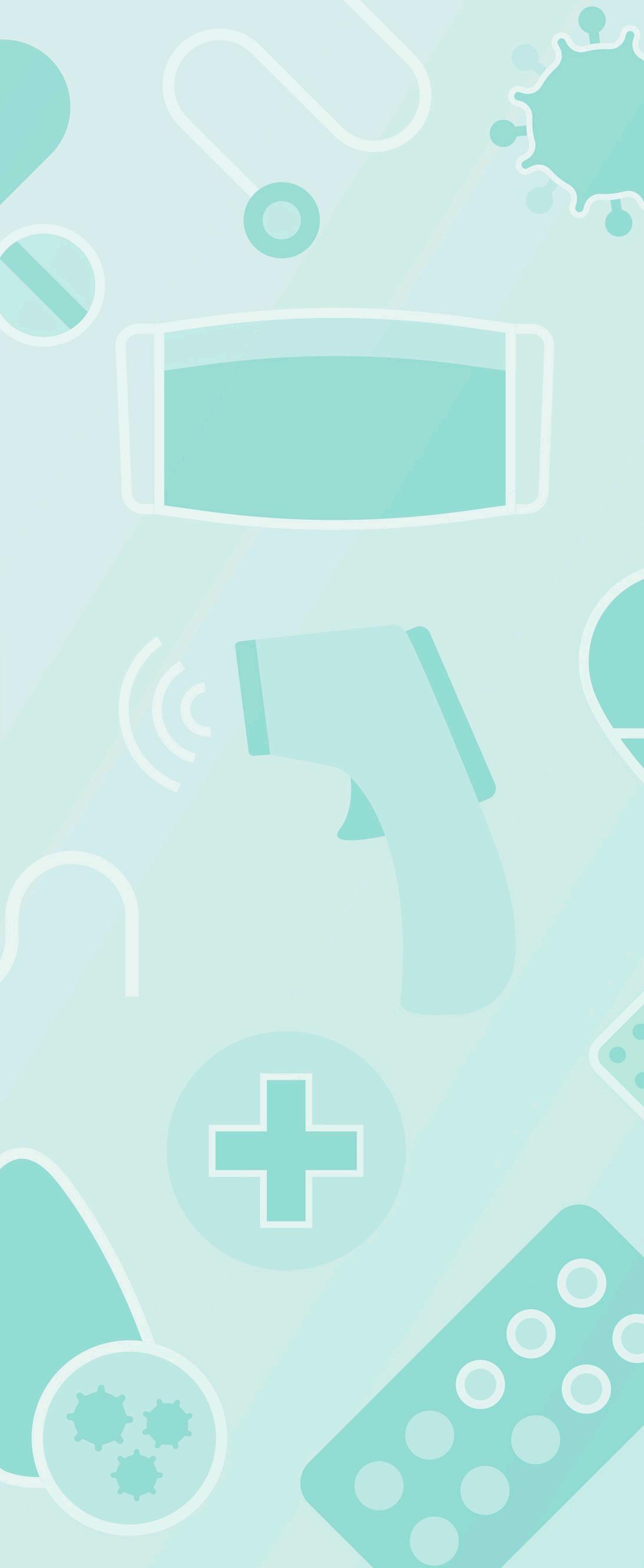
Dr. Michael first connected with TopDoc about four years ago and later met them again at a conference.
"I had a table there. I created an abdominal waist belt that develops your abs and helps regenerate healing and pain. We visited each others' booths and found a lot of synergy between us. They invited me to join them," he shared.
An Ambitious Vision
"TopDoc has amazing engagement and relationships with products and development," Dr. Michael observed. "I would love to lead them into the future of regenerative medicine, which includes stem cells and platelet-rich plasma, for injuries to shoulders, knees and hips. In addition, I want to do preventative medicine, which includes anti-aging medicine."
These are things that people don't usually get, because other doctors often don't know about them.
34
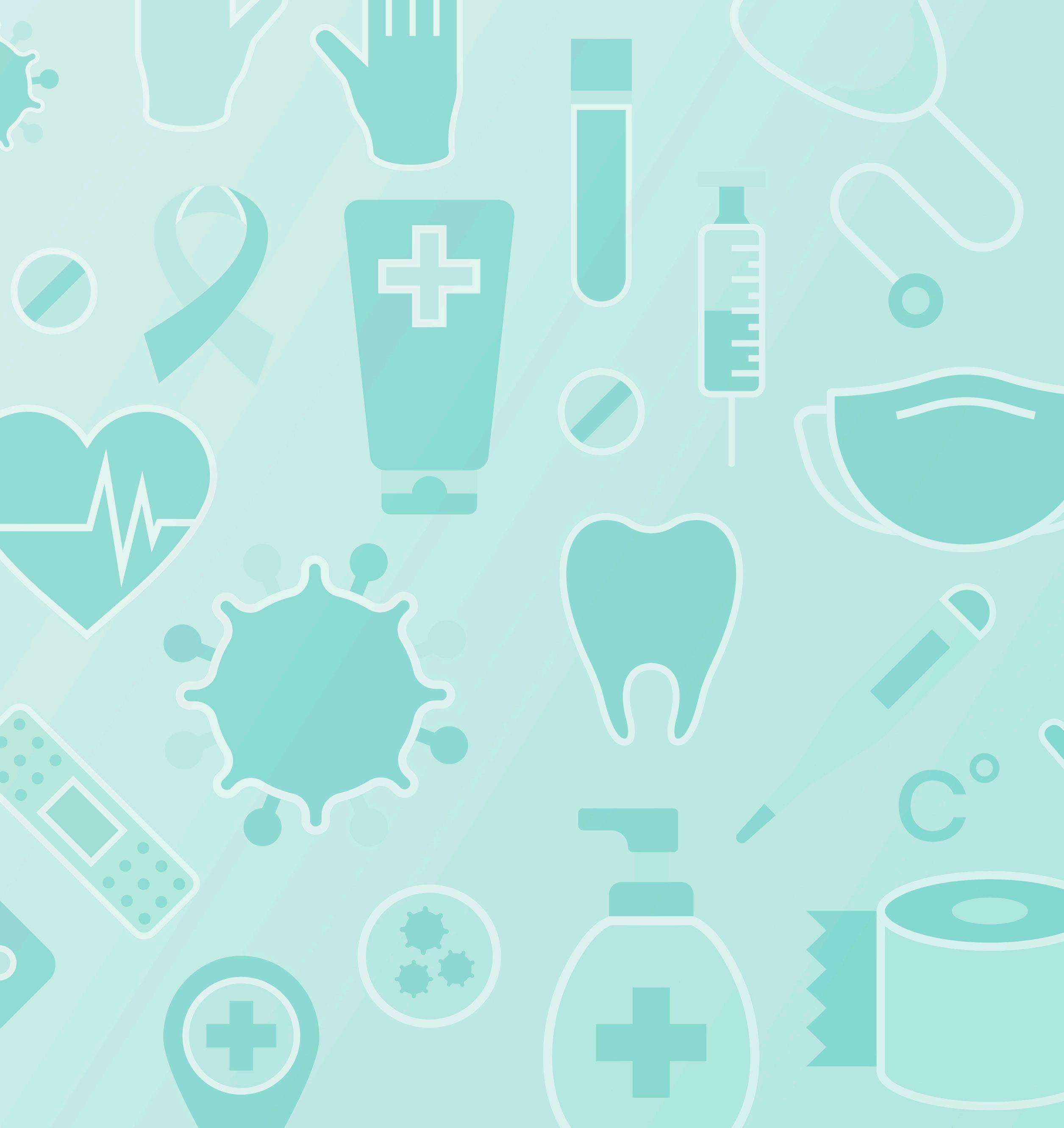
Top Doctor Magazine / Issue 161 / 35

"I want to create the Avengers of TopDoc! I want to have the best doctors in their specialties come together to bring something amazing. And then I want to replicate that."
36
- Dr. Peter Michael, MD-MBA
"If doctors don't know, they can't teach their patients about it. I want to do a lot of anti-aging with them. And that includes processes and treatments to extend people's lives and make them more fruitful," he shared.
Dr. Michael points out that it's not just a physical issue.
"Nobody wants to feel tired, sad or lazy. It really can lead to depression," he explained.

Dr. Michael's vision goes even further.
"I've created a plan to look closely at a person's whole body. It's a starting point, taking a step back, looking at the person as a whole and getting a complete lab analysis — sugar level, blood pressure, lipids, hormones and more. Then, we'll know what to treat. We can teach people to live at the optimal level," he explained.
Dr. Michael envisions TopDoc connecting its diverse, highquality services to ensure the best for each patient.
"Everything is connected. I want all providers to know what the others are offering. I want the left hand to know what the right hand is doing. I want all the doctors to communicate and understand what that patient is getting and doing," he said.

Including Technology
"I also want to integrate technology, like wearable devices for monitoring and actionable data," Dr. Michaed added. "They give us a plethora of data, way more than a patient can. We can have the data before the patient's appointment."
Furthermore, the data can be stored in a cloud and presented in graphs that patients can place in a digital folder.
A Great Partnership
Dr. Michael sees a wide range of opportunities for partnering up with TopDoc Clinics. And he can make it happen.
"I want to create the Avengers of TopDoc! I want to have the best doctors in their specialties come together to bring something amazing. And then I want to replicate that," he concluded.
Top Doctor Magazine / Issue 161 / 37
Is BoneDrinking Broth Good for You?
WRITTEN BY LUKE ARGUE
Maybe you've heard of people drinking bone broth for its nutritional benefits or think that it's the newest dietary fad for people looking to improve their health. But rest assured, it is much more than a fad. Bone broth has a whole host of positive benefits, which can be nutritionally beneficial even if you're not looking to lose weight!
CAN YOU DRINK BONE BROTH?
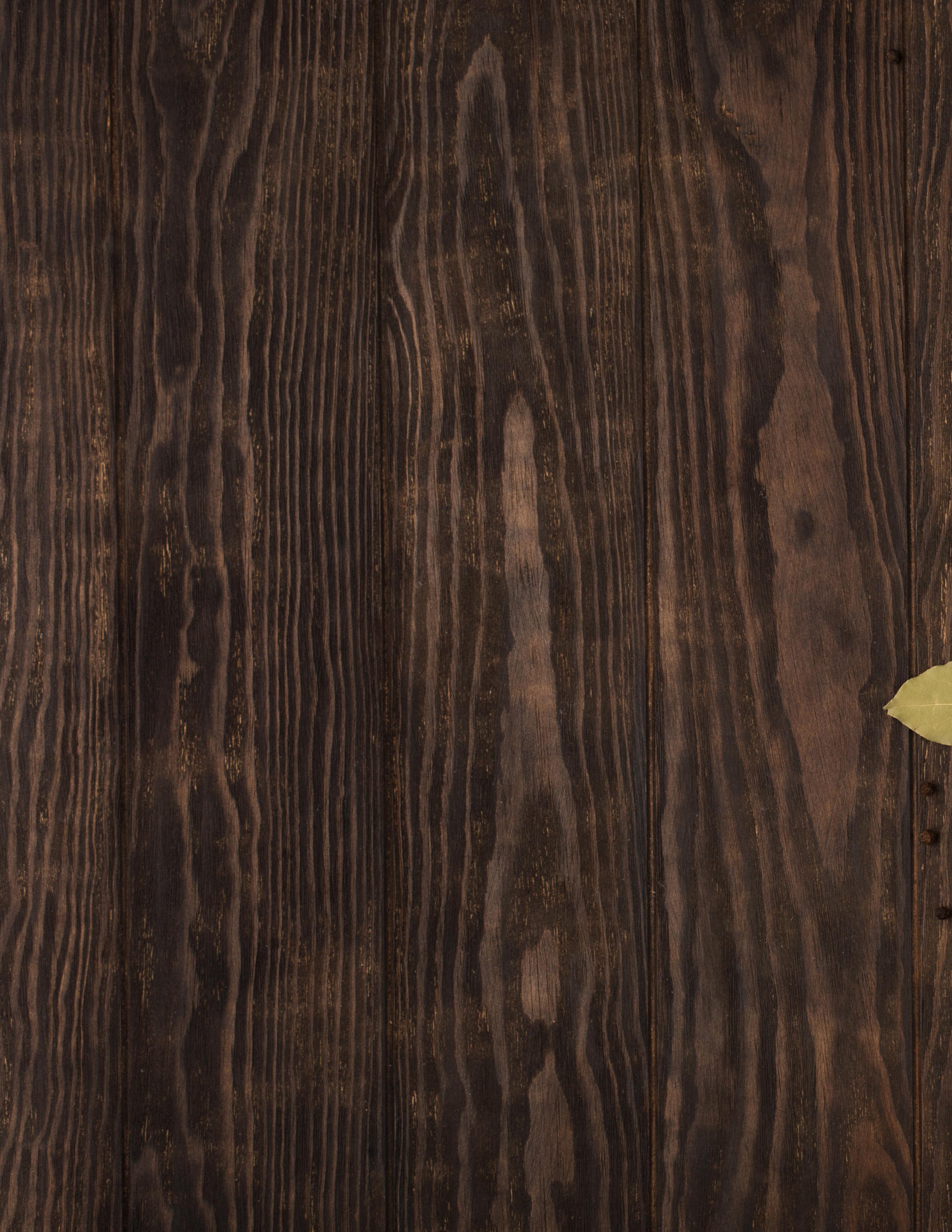
Yes! Bone broth is very safe to drink. In fact, it's very much possible that you've already had bone broth which was added into a soup, gravy or broth as an ingredient. For hundreds of years, people have made bone broth by simmering the bones and connective tissues of almost any animal.
The resulting broth is incredibly nutritious, with high amounts of calcium and other minerals needed for your bones. These nutrients can help strengthen and nourish your bones to make them strong and stable. Bone broth also has nutrients to support your joint health, vitamins and amino acids. Best of all, the process of simmering the bones makes it very easy for your body to absorb all the nutrients, making bone broth a nutrient-rich and easily accessible way to get more vitamins and minerals into your diet!
CAN BONE BROTH BE FROZEN?
Yes, it can! Bone broth is something that can very easily be stored because of how well it freezes. Normally, you can store bone broth in your fridge for up to five days. For longer periods, you can freeze it into containers and then heat it up as necessary.
38

Top Doctor Magazine / Issue 161 / 39
CAN YOU DRINK BONE BROTH EVERY DAY?

Bone broth is very safe to drink every day. There's no real answer as to how much to drink everyday other than however much or little as you like. However, some recommend drinking one cup of bone broth each day to make sure you receive its health benefits, while others have noticed some particular advantages if you drink it in the morning or the evening.
DRINKING BONE BROTH IN THE MORNING
Drinking bone broth in the morning can be very beneficial for women going through pregnancy. Bone broth can be a great way to receive nutrients without offending the stomach or risking vomiting a lot of solid food. Some expectant mothers have even reported that drinking bone broth in the morning helped soothe them and maintain their energy levels throughout the day.
But even if you're not pregnant, a very easily digested and nutrient-rich cup of bone broth in the morning is a great way to eat a small breakfast while still getting plenty of nutrients. Plus, it may even help soothe your stomach, too!
DRINKING BONE BROTH BEFORE BED
Perhaps one of the most surprising benefits of bone broth is its ability to contribute to good sleep. One of the amino acids in bone broth has been shown to positively impact sleep for those suffering from insomnia and help regulate the body's internal clock. Since this nutrient is very prevalent in bone broth, it's thought that bone broth might similarly help your sleep. Admittedly, the research on bone broth and sleep is still limited, but there exists good reason to suggest that it could very likely have a positive effect!
DRINKING BONE BROTH WHILE PREGNANT
Beyond what we've already mentioned about morning sickness, bone broth can be a great support for pregnant mothers looking to maximize their nutrient intake. The nutrients mentioned earlier are absolutely integral during
40
pregnancy to support the growth of the embryo's eventual body. The magnesium in bone broth also helps pregnant women by relaxing the uterus muscles to prevent early contractions and make it easier to sleep at night.
Bone broth also supports pregnant women by making the post-pregnancy period easier. Specifically, the high collagen levels in bone broth help make the skin more elastic, speeding up the recovery for new mothers and reducing the likelihood of stretch marks.
DRINKING BONE BROTH WHILE FASTING
Strictly speaking, drinking bone broth will break your fast since it is not devoid of calories and contains nutrients like proteins and fat. So, if you're on a strict fast where you should only be drinking water, bone broth is off the table. But, if you are adhering to a more lenient fast like intermittent fasting, you can use bone broth as a supplement to support your significantly reduced calorie intake, as long as you are okay with taking in a few calories.
HOW OFTEN SHOULD YOU DRINK BONE BROTH ON KETO
Unfortunately, bone broth is not particularly helpful for some forms of the keto diet, depending on how much fasting you are implementing into your plan. It's important to note that the calories, fats and proteins in bone broth release insulin, which can end ketosis. However, if you are on longer forms of the keto diet that are more oriented toward 24-hour fasts, the small amounts of calories and fats in bone broth might make
it okay for you to consume, as long as you carefully watch your intake.
DOES DRINKING BONE BROTH HELP YOU LOSE WEIGHT?
Bone broth is a great way to help support a weight loss journey. This is because bone broth is very high in protein, which can help regulate appetite, increase weight loss and maintain muscles while still being very low in calories. This makes bone broth a great tool to help satisfy hunger cravings with low calories while maintaining your vital nutrient levels at a calorie deficit.
DRINKING BONE BROTH FOR FERTILITY
Bone broth can also help support fertility through the provision of key nutrients. Because it is so nutrient-dense with lots of proteins and good fats, bone broth can help regulate your body's hormones and boost your fertility. This is true for both men and women!
DOES DRINKING BONE BROTH IMPROVE SKIN HEALTH?

Bone broth provides the key components of healthy skin. Your skin, or dermis, is largely made of collagen. This protein helps improve skin quality by helping it to maintain moisture and elasticity.
This is where bone broth comes in. The high amounts of collagen in bone broth can give your skin the building blocks it needs to construct itself as healthy as possible.
Top Doctor Magazine / Issue 161 / 41
WHY YOU SHOULD DRINK
MORE BONE BROTH
Regardless of whether you're a pregnant mother, a person looking for a more balanced diet or even someone looking for healthier skin and bones, bone broth is a diet supplement that you can benefit from. Bone broth is an extremely efficient delivery method for some of your body's most important building blocks. By giving your body more of these building blocks, you're supporting healthy skin, bones, joints and tissues to create the healthiest version of you possible.
Bone broth is so much more than a fad. It's a traditional diet component that humans have been using for hundreds of years but, for some reason, we've largely forgotten about. However, the benefits of bone broth are too great to ignore any further. Bone broth is an enormous opportunity to help balance your body's diet. Don't miss out on enjoying a healthier you; instead, start incorporating more bone broth into your diet!

42


Top Doctor Magazine / Issue 161 / 43
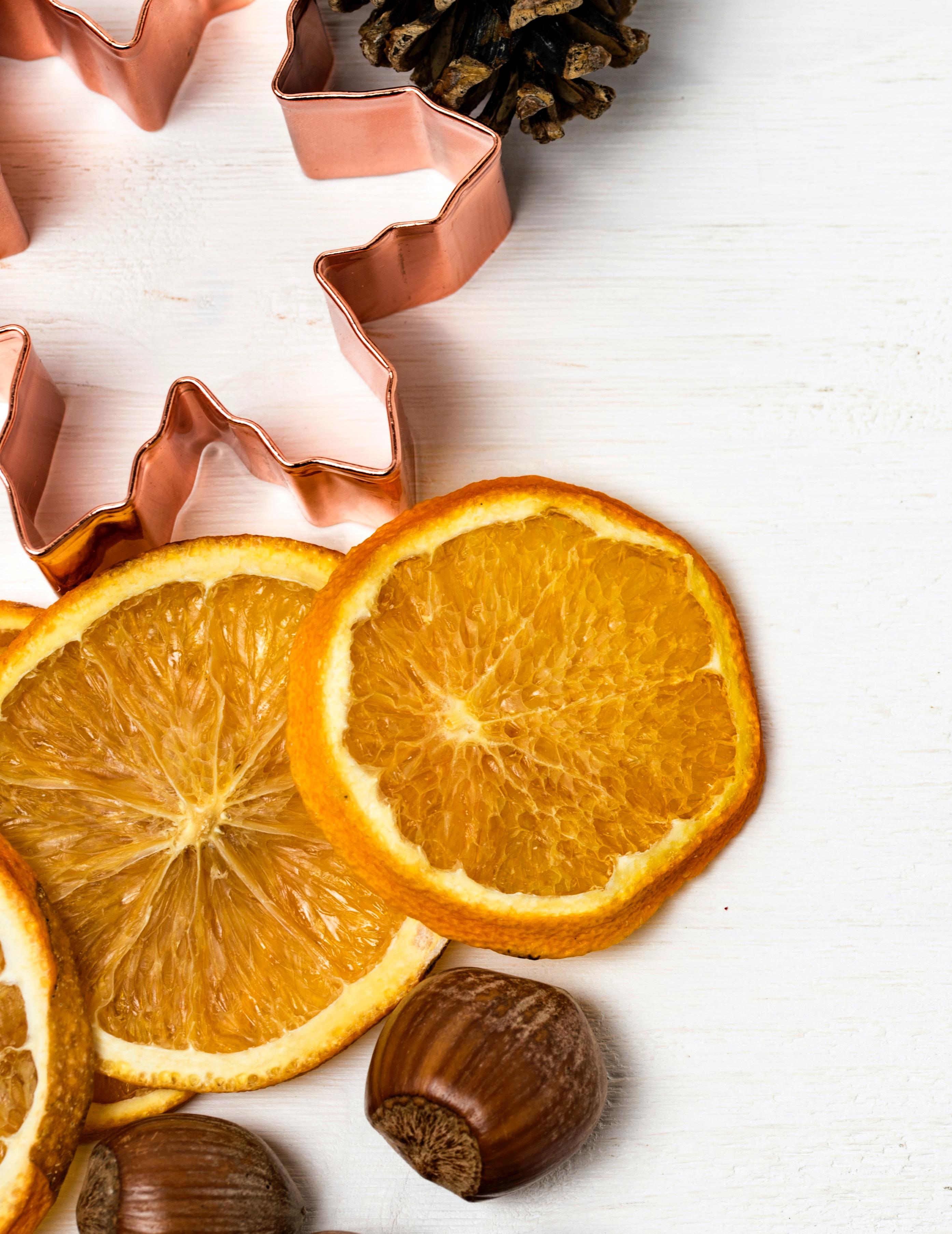
44
5Christmas Recipes TO TRY THIS YEAR
WRITTEN BY ZENITH LUNDELL
NNothing connects people over the festive season quite like a holiday meal. The nostalgic scents, comforting flavors and nuanced textures are intertwined with various traditions and celebrations, creating the perfect Christmas experience.
Whether you spend hours preparing your Christmas feast or you prefer to whip your meal together in minutes, these recipes will help you capture the essence of Christmas and can be worked into any form of celebration.

Top Doctor Magazine / Issue 161 / 45
Mulled Wine Glazed Ham
Many would argue that ham for Christmas is a non-negotiable — a Christmas feast staple. So, what better way to start off the list than with a unique take on the traditional Christmas ham, with all the warm spices and umami flavor? This recipe is perfect for a dinner centerpiece while also providing enough for a midnight snack or leftovers the next day.
Ingredients for the Ham
1 medium to large unsmoked middle-cut gammon with the knuckle
A few sprigs of festive herbs, such as rosemary and thyme
3 fresh bay leaves
2 carrots
2 sticks of celery
1 white onion
2-3 large cloves of garlic
½ a fresh red chili
1 tablespoon of whole black peppercorns
Good-quality olive oil
Ingredients for the Glaze
16 ounces of orange marmalade without the peel
½ or 1 cup of full-bodied red wine
1 star anise
A few cloves, some extra for decoration
1 fresh bay leaf
1 clementine
8-10 canned pineapple rings
How To Prepare
Take the meat out of the fridge and bring it up to room temperature before cooking it.
Place the gammon in a large pot.
Strip the forest herbs, roughly chop the celery and carrots, peel and quarter the onion and the garlic cloves, then add it to a pot with the chili, bay and peppercorns.
Cover with water and bring to a boil. Put the lid on and simmer gently for two hours or until the meat is tender. Turn it halfway, topping up with water if necessary and skimming away any excess fat.
Preheat the oven to 350 F. Transfer the gammon to a roasting tray, keeping some stock for later. Carefully remove the skin, but keep the fat on the meat. Take a sharp knife, score the fat in a crisscross fashion and brush with 1 tablespoon of olive oil. Roast the ham for 20 to 30 minutes or until golden and crisp.
While the ham is cooking, spoon the marmalade into a non-stick saucepan on medium heat, pour in the red wine and bring to a simmer, stirring every so often.
Add the spices and the zest of a clementine and pour in the canned pineapple juice, saving the fruit for later. Allow the sauce to simmer, reduce it by half and switch it off. By then, the sauce should be thick and syrupy.
Take the ham out of the oven and arrange the pineapple rings over the meat, securing them with the cloves. Pour some glaze over the meat.
Before placing the gammon back in the oven, spoon half a ladleful of the gammon stock into the tray. Roast for 20 minutes or until shiny, basting with the remaining glaze for 5 minutes.
Once glazed and polished, the gammon is ready to serve.

46
Beetroot and Onion Tarte Tatin
There is no need to have your vegan guests survive on sides at Christmas dinner. The whole troupe can enjoy this show-stopping vegan tart. The deep coloring of the beetroot and flaky pastry is perfect for a cozy Christmas Eve party.
Ingredients for the Tarte Tatin
14 ounces beetroot, cut into wedges
1 red onion, cut into wedges
3 tablespoons of olive oil
2 tablespoons of rice wine vinegar
2 tablespoons of soft brown sugar
A couple of star anises
Flour for dusting and rolling
17 ounces prepared puff pastry
Zest of 1 orange
Arugula salad to serve
How To Prepare
Preheat the oven to 350 F. Mix the beetroot and onion in 2 tablespoons of oil, vinegar and sugar and the star anise in a bowl.
Heat the remaining tablespoon of oil in an ovenproof frying pan. Layer the base of the pan with the beetroot and onion. Cover the pan with foil and roast in the oven for 45 minutes.
Roll the pastry thinner than an inch on a wellfloured surface.
Take the pan out of the oven and remove the foil. Place the rolled pastry on the vegetables, tucking in the edges. Score the pastry with an X to allow for ventilation.
Place the pan back in the oven and bake for a further 35 minutes or until the pastry is puffy and golden.
Loosen the pastry with a knife, then flip the pan over to turn the tart onto the serving plate. Once the tart is pastry side down onto the plate, top with orange zest and serve with a peppery salad.
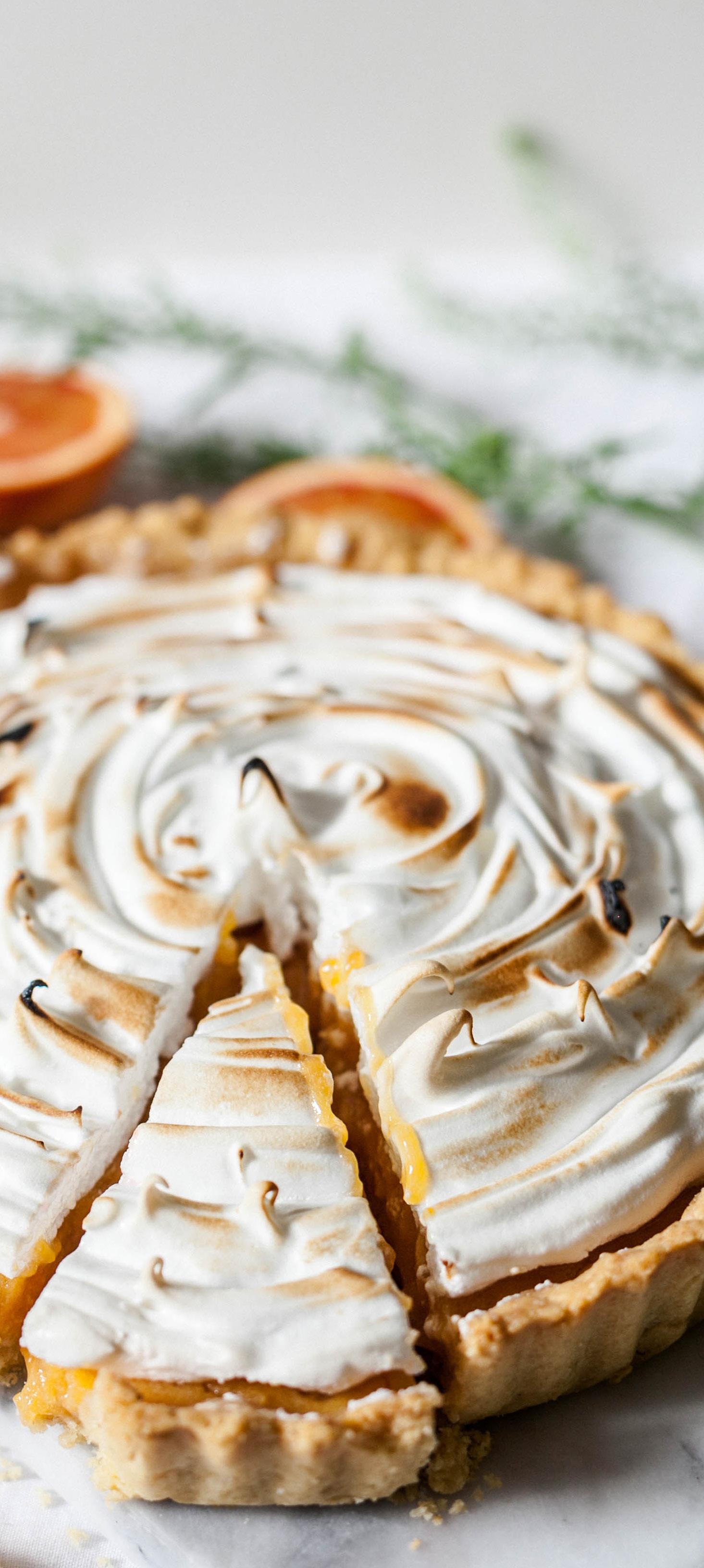
Top Doctor Magazine / Issue 161 / 47
If you're looking for a quick, simple idea for a last-minute addition to any festive function, look no further than this Christmas chicken recipe — perfectly tender and juicy on the inside and crispy on the outside.

Ingredients
8 boneless, skinless chicken breast halves
1 cup of sour cream
A dash of lemon juice to taste
2 tablespoons of oil
2 tablespoons of butter
2 teaspoons of Worcestershire sauce
1 teaspoon of celery salt
1 teaspoon of pepper
1 teaspoon of garlic salt
1 cup of crushed croutons or panko bread crumbs
How To Prepare
Place the chicken in a large shallow dish. In another bowl, combine the sour cream, lemon juice, Worcestershire sauce and seasonings. Mix well, pour over and coat the chicken. Cover and refrigerate for 30 minutes or overnight.
Preheat the oven to 350 F. Prepare a baking tray using half the oil and butter. Place the chicken breasts and cover them with the crumbs. Roast for 30 to 35 minutes.
Halfway through, drizzle the remaining butter and oil on the chicken. Once golden and crispy, remove and serve with salad and potatoes.
Crispy Coated Chicken Breast
48
Spiced Blood Orange Shrub
An accompanying drink takes your festive meal to new heights. You won't even miss the alcohol with this spicy, non-alcoholic Christmas drink recipe. Of course, you can add alcohol if you wish to. Vodka or whiskey works well with warm spices and wintery citrus.

Ingredients
4 medium blood oranges
1 small piece of ginger, peeled and chopped
1 medium cinnamon stick
6 cloves
½ cup of soft, brown sugar
¼ cup of apple cider vinegar
Club soda for serving
How To Prepare
Zest the blood oranges in broad stripes. Set half the zest aside for decoration. Juice the oranges and run the juice through a fine sieve to produce 1 cup of liquid. Set aside.
Bring the ginger, cinnamon stick, cloves, sugar, zest and 1 cup of water to a boil in a medium saucepan. Cook and occasionally stir until sugar is dissolved and the mixture has reduced by half. Remove the pan from the heat and let it cool. Once cool, strain the syrup through a sieve into a measuring glass.
Combine the vinegar, blood orange juice and syrup. Taste the shrub — it should be a well-balanced sweet-and-sour flavor.
To serve, pour 3 tablespoons of shrub into an ice-filled glass. Top off with 4-5 ounces of club soda and stir gently. Garnish with the remaining zest.
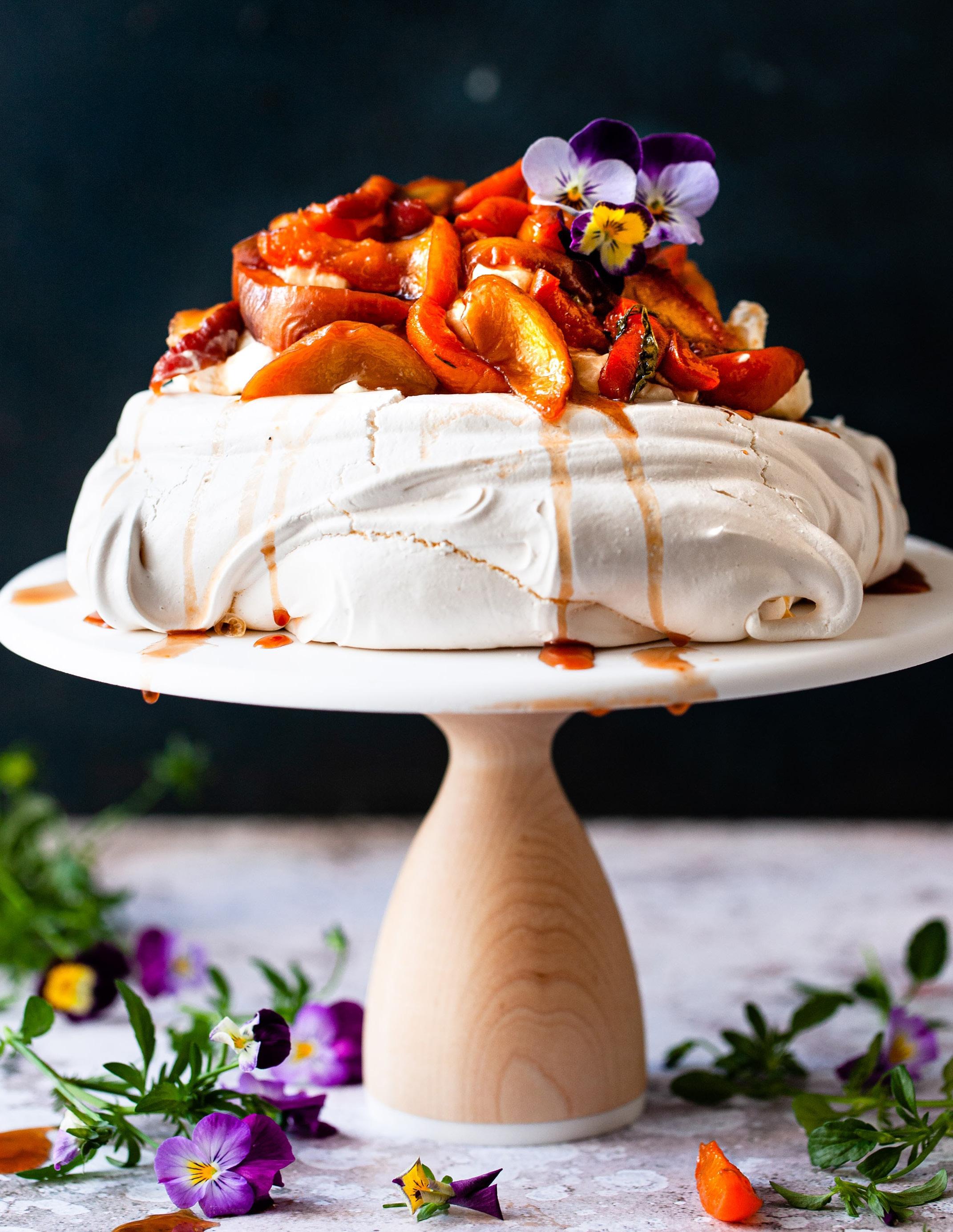
Chocolate Pavlova With Spiced Pears
A sleek spin on a timeless classic is a beautiful way to end an evening. The dessert is perfect for Christmas, not too heavy and not too sweet, especially after the rich meals that usually precede dessert. This Christmas recipe is too good not to share. If you are looking for more child-friendly desserts, Christmas Rice Krispie Treats or Jell-O recipes are also great options.
Ingredients
6 small pears, peeled
2 cups of maple syrup
1 medium piece ginger, sliced
6 bay leaves
1 ½ cups of caster sugar
6 egg whites
½ teaspoon of white vinegar
1 teaspoon of cornflour
2 ½ tablespoons of cocoa powder
17 ounces of sour cream
1 tablespoon of sifted icing sugar
How To Prepare
Place pears, maple syrup, ginger, bay leaves and 3 cups of water in a saucepan. Bring to a simmer over medium heat. Cover the saucepan, reduce the heat to low and let it simmer for 45 minutes or until tender.
Remove the pears. Discard half of the liquid, keeping the bay leaves and ginger. Boil the remaining liquid, bay leaves and ginger until thick and syrupy. Cool completely and set aside.
Preheat the oven to 320 F and line a baking tray with baking paper.
Place egg whites and caster sugar into a bowl. Using an electric mixer, whisk on medium speed for 10 minutes until thick and glossy. Take some mixture between your fingers to check if the sugar is dissolved. Once dissolved, fold through vinegar, cornflour and 2 teaspoons of cocoa until well mixed.
Spread the meringue mixture on the prepared tray.
Place the pavlova into the oven and reduce the heat to 250 F. Bake for 1 hour or until crisp and dry. Once baked, turn the oven off and cool the meringue in the oven with the door ajar until completely cooled.
Combine sour cream, icing sugar and the remaining cocoa in a bowl and spread over the pavlova. Halve and arrange the pears over the top. Drizzle the maple syrup mixture over the top to finish it off.
Your Christmas Recipes Covered
There is something for everyone with these five Christmas recipes. The meals are colorful, delicious and varied. What's more, the recipes are simple to follow — the perfect combination for any Christmas recipe!

Top Doctor Magazine / Issue 161 / 51
adhd& myths
What Is Actually Going On Inside Your Brain
WRITTEN BY LUKE ARGUE
Our understanding of the most common mental disorders of the 21st century varies from one individual to another. The thought of ADHD, for example, brings back images of a hyperactive young boy who can't sit still in class, has difficulty focusing and, perhaps, is 'different' from his fellow students. However, research has shown that ADHD is far from these beliefs. Instead, they belong more to the realm of myth than reality, thus often hampering treatment and recovery rather than helping us understand what children with ADHD go through.
What Is ADHD?
ADHD (i.e., Attention Deficit Hyperactivity Disorder) is one of the most common neurological development disorders in children, often associated with hyperactivity, impulsive behaviors and a lack of attention.
However, defining ADHD is more complex than one might think since it can manifest itself through various symptoms summarized by researchers in three primary forms:
Predominantly Inattentive

It describes a person whose ADHD manifests primarily as difficulty finishing a task, paying attention to details or following instructions.
Predominantly Hyperactive
This form of ADHD focuses on the individual's hyperactivity leading to difficulties with fidgeting, impulsive behavior and waiting.
Mixed
This form of ADHD presents both inattentive and hyperactive traits equally.
ADHD is not a one-size-fits-all condition. One person
52

Top Doctor Magazine / Issue 161 / 53
with ADHD is very likely to behave very differently from another. The same goes for its symptoms, which vary significantly between individuals — daydreaming, being forgetful, frequent fidgeting, having a hard time resisting impulses, struggling with waiting to do something, etc.
Are ADHD and ADD the Same Thing?
Although related, ADD and ADHD are not the same condition. Going back to the types of ADHD mentioned earlier, ADD is missing the H (i.e., the hyperactivity part of ADHD). Thus, ADD is often characterized by difficulty maintaining attention but not necessarily by hyperactivity. For clarity, ADD is another name for the first type of ADHD — Predominantly Inattentive.
ADHD Myths and Facts
Is ADHD a Thought Disorder?
Not exactly, since ADHD is not created by a particular thinking pattern. Unlike a thought disorder, which reflects an issue in an individual's way of thinking, ADHD affects the brain's functioning.
Does ADHD Make You Dumb?
Absolutely not. ADHD does not affect a person's intelligence and certainly is not a mark of stupidity or a lack of intelligence. On the contrary, nothing prevents a child with ADHD from becoming quite intelligent — names such as Mozart, Benjamin Franklin and Abraham Lincoln stand as solid proof!
Are ADHD People Lazy?
ADHD does not make people lazy. What we misunderstand as laziness is a child's struggle to stay focused. Such children strive toward succeeding but may have a harder time finding motivation
than others due to the challenges of maintaining focus.
Are ADHD People Smart?
People with ADHD can be as brilliant as Benjamin Franklin or Abraham Lincoln, although it does not necessarily make someone more intelligent by default. However, ADHD can allow people to excel exceptionally at things that pique their interest. This phenomenon, often called hyperfocus, occurs when a person with ADHD works on something they are very interested in, causing them to enter a state of extreme and completely undivided focus.
Is ADHD a Disability?
Yes and no. ADHD is not a learning disability — while it can make learning harder, it doesn't hamper learning skills like reading, writing or math. This myth is mainly based on the fact that ADHD often coexists with other conditions behind learning disabilities.

54
That is not to say that ADHD children may need additional assistance or help to learn. Indeed, assisting children with ADHD can be a great way to help them overcome any difficulty they may be experiencing.
Can ADHD Cause Insomnia or Make You Tired?
The relationship between ADHD and insomnia or fatigue is a bit unclear, although there is a correlation between the two. Children with ADHD are more likely to develop sleep disorders, experience nightmares and have shorter sleep times in puberty. People with predominantly hyperactive ADHD are more likely to suffer from insomnia.
Myths About ADHD Medication
Myths and misconceptions don't just float around an ADHD diagnosis; they often surround ADHD medicine as well.
ADHD Meds Are Unnecessary
For many people with ADHD, medicine is a crucial way to help them manage their symptoms. This medicine primarily comes in two forms:
Stimulants, which improve focus;
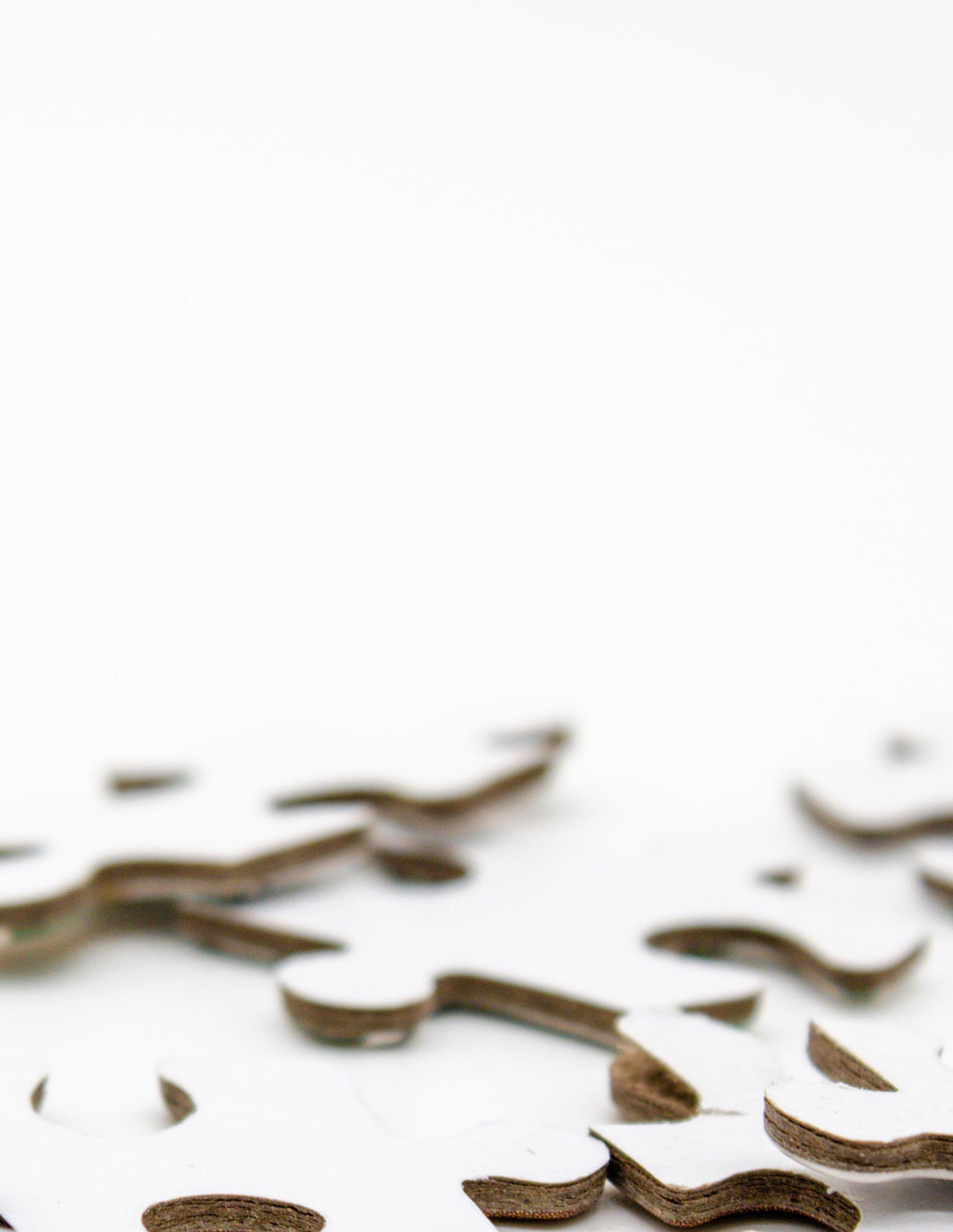
Nonstimulants, which help with impulse control and concentration.
Each person will need a different type or combination of medications to treat their symptoms, but that is not to say that medication is unnecessary.
ADHD Meds Are Addictive
The foundation of this myth is that people with ADHD who do not receive proper treatment are more likely to abuse drugs. However, the driving factor for this abuse is the presence of poorly treated ADHD, not any ADHD medication.
ADHD medication is a completely safe and effective form of treatment. Studies
of children who take ADHD medication have found no increased chance of drug abuse corresponding with ADHD medication use.
It is possible to misuse ADHD medication like any medicine. But if you're a parent considering whether ADHD medication is something you're comfortable with, take encouragement that ADHD medication won't increase the likelihood that your child will delve into substance abuse someday.
A Parting Reminder
ADHD is a condition we may all be familiar with but often understand less than we think. Numerous myths and misconceptions circulate on the news and the Internet around ADHD, how it's treated and how it affects people — this was by no means an exhaustive list. But hopefully, it illuminated ADHD a little more and dispelled some myths you may have heard or believed.
Top Doctor Magazine / Issue 161 / 55

SAD
Seasonal Affective Disorder is similar to other forms of depression in that it affects your daily life and negatively impacts your mood. 56
"
WHAT SEASONAL AFFECTIVE DISORDER IS AND HOW TO COMBAT IT A
WRITTEN BY LUKE ARGUE
s the leaves turn red and the wind grows colder, many of us look forward to the holiday season. But for some of us, the colder weather turns the end-of-year festivities into a time of isolation or depression. This condition is called Seasonal Affective Disorder, where the change in season causes a change in mood for the worse.
Seasonal Affective Disorder does not have to ruin every holiday season. Making lifestyle changes to combat the causes of seasonal affective disorder could help you improve your mood and rediscover your holiday cheer.
What Is Seasonal Affective Disorder?
Seasonal Affective Disorder (SAD), also called seasonal depression, is similar to other forms of depression in that it affects your daily life and negatively impacts your mood. What makes it different from other forms of depression is that Seasonal Affective Disorder is triggered by the change in weather between seasons, especially at the start of fall.
Seasonal Affective Disorder Causes
As summer transitions to fall, the sun starts setting earlier and the weather gets colder, causing people to stay indoors more. These factors reduce exposure to daylight, disrupting the body's natural systems for controlling mood and causing seasonal depression. Less daylight interferes with your circadian rhythm and your body's production of serotonin and melatonin, worsening your sleep schedule and mood.
Seasonal Affective Disorder Symptoms
Seasonal Affective Disorder has a lot of overlap with the symptoms of depression. Common mood symptoms of seasonal depression include: Anxiety. Sadness. Feelings of worthlessness or irritation. Thoughts of death or suicide.
Physical symptoms of seasonal depression include: Extreme fatigue. Heavy limbs. Diet changes such as carbohydrate cravings. Weight gain.
SAD
Top Doctor Magazine / Issue 161 / 57
Who Is Most Likely To Get Seasonal Affective Disorder?
Several risk factors increase your likelihood of experiencing Seasonal Affective Disorder. A family history of seasonal depression, having preexisting symptoms of depression, living far from the equator and having low vitamin D levels increase your risk of SAD.
If you do experience Seasonal Affective Disorder, you are far from alone. SAD affects 10 million Americans. The condition most commonly starts in the age range of 18 to 35 and is four times more common in women than men.
How Do You Treat Seasonal Affective Disorder?

You don't necessarily need to go to a doctor or start an exhaustive medication regime to treat your SAD.
Vitamin D for Seasonal Depression
Vitamin D is a common over-the-counter treatment method for Seasonal Affective Disorder. There is some evidence from patients who tested low in vitamin D that supplements helped alleviate their symptoms. However, the effectiveness of vitamin D in treating seasonal depression is not proven by experts.
Light Therapy for Seasonal Affective Disorder
How Do I Know if I Have Seasonal Affective Disorder?
Ruling out alternative causes of depression is the most straightforward way to tell if you have Seasonal Affective Disorder. Some essential questions to ask yourself to determine if you have SAD are:
Whether you have the symptoms of major depression or not.
Whether the symptoms have occurred during a particular season for at least two consecutive years or not.
If the answers to those questions are yes, you may be dealing with SAD.
Light therapy treats seasonal depression by providing more light to the patient, usually with a box emitting light that mimics the light in the sky shortly after sunrise. By emitting this light, the box exposes you to the light you would normally experience during warmer months, all while eliminating any risks of skin cancer or sunburns from the harsh UV light emitted by the sun. This form of treatment is the most effective and studied treatment for seasonal affective disorder.
Exercise for Seasonal Affective Disorder
Exercise is an effective way to boost your mood and combat any form of depression, seasonal or otherwise. While exercising, your body releases endorphins, improving your body's mood and reducing pain. Exercise can also help boost your metabolism,
SAD
58
raise self-esteem, reduce anxiety and improve your sleep to make you feel healthier overall.
Keep a Healthy Sleep Schedule
Keeping a regular sleep schedule is a critical part of fighting seasonal depression. Sleeping too much can compound any symptoms of depression. Try to go to sleep and wake up at the same time to establish a regular schedule.
When Should You See a Specialist?
Certain instances of Seasonal Affective Disorder call for a visit to a specialist. Some complications of SAD include: Social withdrawal.
Seasonal Affective Disorder Is a Real and Serious Condition

Just because the weather gets colder doesn't mean your mood has to get darker! Seasonal Affective Disorder is a serious condition that can dampen even the brightest holiday spirits. You can treat SAD by addressing the underlying causes and developing healthy habits. Expose yourself to as much light as possible, exercise regularly and maintain a healthy sleep schedule to limit the symptoms of Seasonal Affective Disorder and reclaim your holiday joy!
Work or school problems.
Substance abuse. Anxiety. Eating disorders. Suicidal thoughts. Another reason to see your doctor is if one of the above mentioned treatments does not work for you. In that case, it may be worth talking to your doctor about using antidepressants. Be sure to clear antidepressant usage with a specialist beforehand.
SAD
Top Doctor Magazine / Issue 161 / 59
ARE MENSTRUAL CRAMPS normal?

60
WRITTEN BY GENTRY SHANNON
Roughly 50% of the human race are no strangers to several days of cramping a month. For many — but not all — women, cramping is a sign of unpleasant things to come: an upcoming period. It tends to begin in the few days preceding the period and extend into the first few days of bleeding, slowly easing up over time.
Sometimes, the pain is manageable. At other times, however, it seems unbearable. Which begs the question: is there a point at which menstrual cramping becomes abnormal? And if so, what are the telltale signs?
NORMAL VS. ABNORMAL MENSTRUAL CRAMPS
All of these symptoms are typical effects of menstrual cramping. Occasionally, however, accompanying signs indicate that something more than regular uterine contractions is at work. Possible red flags include:
Timing: Menstrual cramps don't generally occur other than within the few days before and then during your period. Cramping outside of this general timeframe may indicate an underlying health concern.
CAUSES OF MENSTRUAL CRAMPS
Part of distinguishing normal period cramps from abnormal ones lies in understanding the origin of the cramping itself. During a period, a woman's body expels the uterus' lining (i.e., the endometrium) by engaging in a series of contractions. These contractions are prompted by prostaglandins, hormone-like chemicals associated with increased pain and inflammation.
Aside from the pain caused by the contractions themselves, some especially strong contractions can flatten surrounding blood vessels, cutting off oxygen and resulting in additional discomfort.
Uterine contractions and oxygen deficits have a whole array of associated symptoms, ranging from non-existent to severe depending on the person and even differing from one period to the next. Direct symptoms may include: Aching or sharp pain in the lower abdomen; Feeling pressure on the belly; Hip pain; Lower back pain; Upper thigh pain.
Indirect symptoms may include: Nausea and vomiting; Headaches; Loose stools.
Unusually heavy bleeding: Period flows vary from woman to woman; some have very light periods, while others are conditioned to relatively heavy bleeding. However, abnormally heavy bleeding can signify something atypical and worrisome.
No relief from medications: If over-the-counter pain relievers such as Ibuprofen or Aspirin fail to take the edge off the pain, doctors may conduct an evaluation to see if there is something else behind it.
Anybody experiencing one or more of those three conditions should consult their doctor as soon as possible. Only a trained medical professional can accurately identify any underlying issues and recommend the best course of treatment.
Several conditions are often to blame for abnormal cramping:
Endometriosis: A condition where tissue that should only occur within the uterine walls also grows on the exterior, generally on fallopian tubes, ovaries or the inside lining of the pelvis.
Uterine fibroids: Non-malignant growths in the uterine wall that induce pain.
Adenomyosis: Similar to endometriosis, adenomyosis occurs when uterine tissue grows outside of its normal range. With adenomyosis, however, the tissue grows into the uterine wall.
Pelvic inflammatory disease (PID): An uterine
Top Doctor Magazine / Issue 161 / 61

62
infection, generally contracted as a sexually transmitted disease.
Cervical stenosis: If the cervix's opening is unusually small, the path of the menstrual flow becomes hampered, resulting in a backlog of blood and the endometrium. This excess buildup causes increased pressure inside the uterus.
TREATMENT OPTIONS
Unfortunately, pain, pressure and discomfort are commonplace with periods, even when not experiencing any of the above conditions. So what varieties of treatment options are available for pain management?
Natural Remedies
Before taking medicine or attempting to revamp your diet, many women prefer to try smaller-scale natural remedies. Below are just some of the most common options:
Heat: According to a review of some studies conducted in 2018, applying heat to the right areas can be just as effective as some types of medication. Women use various application methods, ranging from electric heat pads to hot water bottles or rice-filled packs.
Stay hydrated: Ensuring that you're well-hydrated helps deter water retention, preventing bloating that can exacerbate already-painful cramps.
Exercise: Though jumping on the treadmill may not be the first solution that comes to mind when
bedridden with cramps, exercise releases endorphins, a type of hormone that helps relieve pain. Even low-intensity exercise, such as walking, can help decrease pain from menstrual cramps.
Yoga: Much like other forms of exercise, yoga also releases endorphins. One study even found it more effective than most aerobic activities!
Dietary Options
Along the same lines as natural remedies are dietary changes. They may include cutting things out of meals and attempting to include others. In general, foods to avoid are any that commonly cause bloating or water retention.
Foods to avoid: Fatty foods; Alcohol; Carbonated beverages; Caffeine; Salty foods.
Foods to include:
Herbs: Many herbs, such as chamomile tea, fennel seeds, cinnamon, ginger, dill and French maritime pine bark extract, help calm muscle contractions and decrease swelling.
Beans and lentils: Beans and lentils have been shown to relieve menstrual cramps.
Bananas: Like beans, bananas are high in fiber. They also contain magnesium, another substance believed to help ease period cramps.
Dark, leafy greens: Much like foods containing fiber, those that contain calcium, such as leafy greens, have been shown to help ease period pain.
Salmon: Salmon contains vitamin D, a nutrient that helps the body to absorb more calcium. They also contain a fatty acid called Omega3sm, which fights inflammation and reduces the severity of period cramps.
Medication
Most over-the-counter medications that help relieve pain and pressure from period cramping are NSAIDs — nonsteroidal anti-inflammatory drugs — such as Ibuprofen, Aspirin and Motrin.
MENSTRUAL CRAMPS ARE NORMAL BUT TREATABLE
The answer to the 'are menstrual cramps normal?' question is an affirmative one, most of the time. Except for a few rare but intense cases (such as endometriosis) that only a medical expert can diagnose, cramping is a routine part of a woman's period, naturally resulting from uterine contractions.
However, surrendering to the constant pain of such cramps does not have to be the norm. Thanks to a variety of options, period pain can be significantly mitigated. Bookmark this article so that the next time your period rolls around, you have an arsenal of capabilities to combat those cramps!
Top Doctor Magazine / Issue 161 / 63
The National Sculpture Society New York City awarded Richard MacDonald’s Duality, the 2022 Maurice B. Hexter Medal of Honor. Exemplifing the idea that the melding and balancing of opposites creates balance, harmony, and insite into the pervasive principle of Yin & Yang. Masterful sculptors of every era and culture move into the complex field of multiple figure compositions to explore the full emotional range possible when figures interact. Multiple figure compositions create in implied narrative, a suggested relationship, and ultimately, for the viewer. Richard MacDonald has been exploring the complex visual, aesthetic and conceptual relationships of multiple figures throughout his career, and the newest work Duality highlights a theme that runs through the diverse collection. w brings into focus the idea that darkness is defined by light, strength is balanced by tenderness, and that in the balance of opposing forces there is a center of tranquility and peace. It is the age-old concept of Yin and Yang echoed in a new form, and through this lens earlier works can be seen to exhibit the same dynamic balance.
NATIONAL SCULPTURE SOCEITY MAURICE B. HEXTER PRIZE WINNER

THEARTOFRICHARDMACDONALD.COM | 702.730.3990
RICHARD MACDONALD
64
THE ART OF RICHARD MACDONALD GALLERY | BELLAGIO RESORT AND CASINO “O” THEATRE 3600 S LAS VEGAS BLVD LAS VEGAS NV 89109








 - DR. PETER MICHAEL, MD-MBA
- DR. PETER MICHAEL, MD-MBA

























 WRITTEN BY LUKE ARGUE
WRITTEN BY LUKE ARGUE










 WRITTEN BY GAYE NEWTON
WRITTEN BY GAYE NEWTON



































